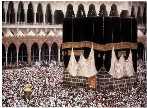Hashemites
Gilanis are descendants of Hashemites who traditionally refers to those belonging to the Banu Hashim, or clan of Hashim, a clan within the larger Quraish tribe, of which Hazrat Muhammad Mustafa (P.B.U.H) was a member. It also refers to an Arab dynasty whose original strength stemmed from the network of tribal alliances and blood loyalties in the Hejaz region of Arabia, along the Red Sea. The Hashemites trace their ancestry from Hashim (died about 510), the great-grandfather of the Hazrat Muhammad Mustafa (P.B.U.H). The early history of the Hashemites saw them in a continuous struggle against the Umayyads for control over who would be the caliph or sucessor to Hazrat Muhammad Mustafa (P.B.U.H). The Umayyads were of the same tribe as the Hashemites, but a different clan. This rivalry eventually would lead to the split between the Sunni and Shia. After the overthrow of the Umayyads, the Abbasids would present themselves as representatives of the Hashemites, as they claimed descent from Abbas ibn Abd al-Muttalib, an uncle of Hazrat Muhammad Mustafa (P.B.U.H). Umayyads and Abbasids were brothers of Gilani Syeds but this is a bitter historical fact that Gilani Syeds were always target of calamity, outrage, oppression, injustice and violence of their own but opportunist brothers. They never contaminated themselves in any activity, struggle or bloodshed for crown,throne and fortune but instead of this, they choose the path of preaching Islam throughout the world as true and sincere sucessor of their grandfather Hazrat Muhammad Mustafa (P.B.U.H). From the 10th century onwards, the Sharif (religious leader) of Mecca and its Emir was by traditional agreement a Hashemite but Gilani Syeds were never candidates of Sharif or Amir at any stage. Before World War I Husain ibn Ali of the Hashemite Dhawu-'Awn clan ruled the Hejaz on behalf of the Ottoman sultan. For some time it had been the practice of the Sublime Porte to appoint the Emir of Mecca from among a select group of candidates. In 1908, Husain ibn Ali was appointed Emir of Mecca. He found himself increasingly at odds with the Young Turks in control at Constantinople, while he strove to secure his family's position as hereditary Emirs. Between 1917 and 1925, after the collapse of Ottoman power, he ruled an independent Hejaz, of which he proclaimed himself king, with the tacit support of the British Foreign Office. His chief rival in the Arabian peninsula was a tribal warlord named Ibn Saud, who annexed the Hejaz and set his own son Faisal as governor. Hussein's two politically active sons were Abdullah and Faisal, later to become the kings, respectively, of Transjordan and Iraq. The Hashemite Kingdom of Iraq lasted from 1921 to 1958, and a line of Hashemite kings have been ruling Transjordan, now Jordan, since 1921. Courtesy and Contents: Wikipedia, the free encyclopedia.
|
